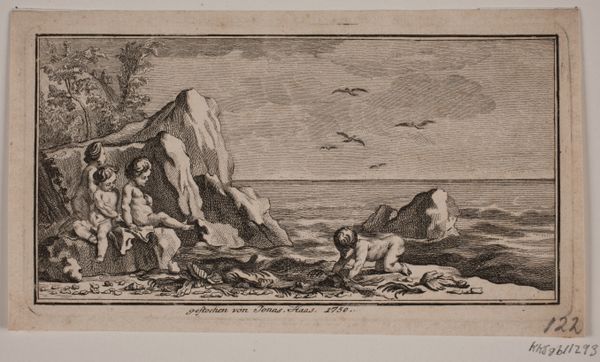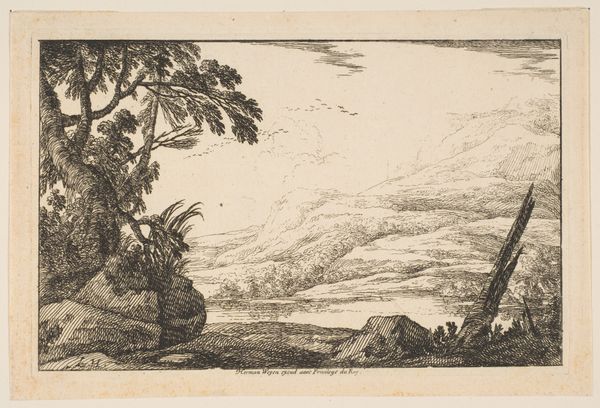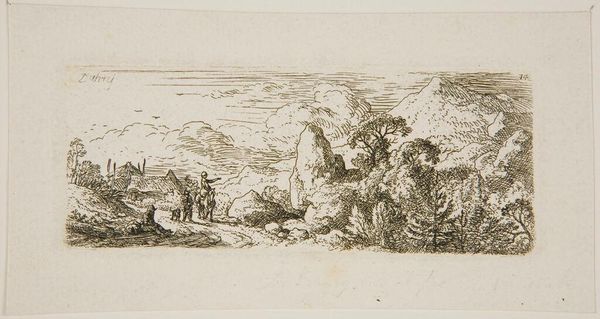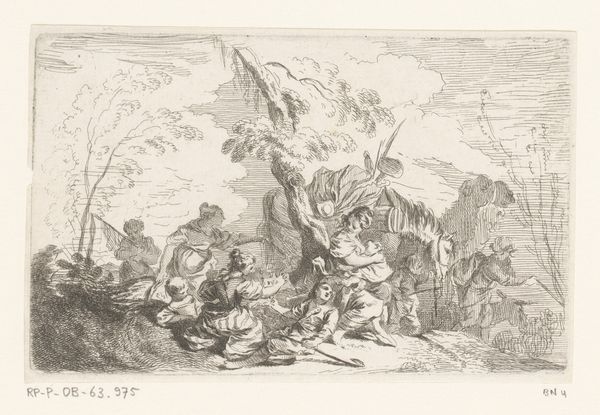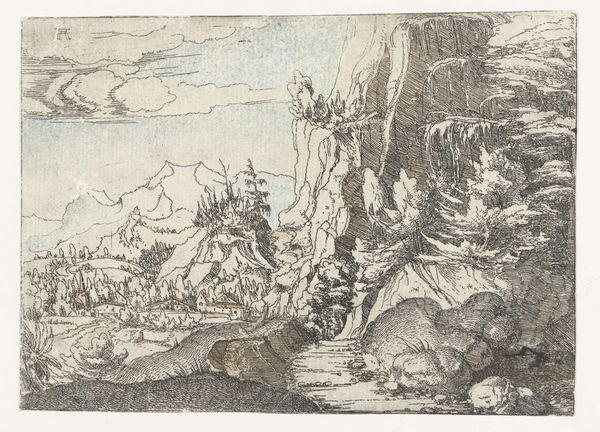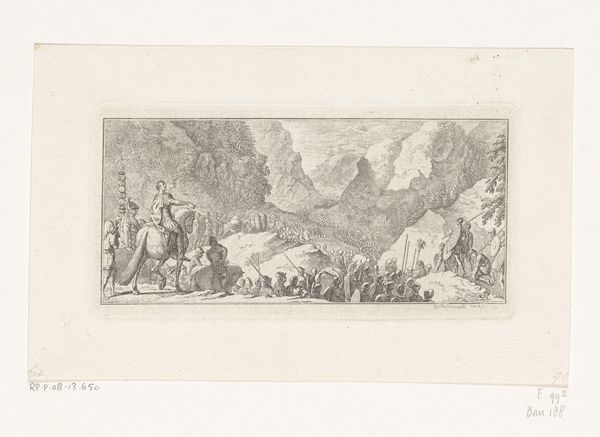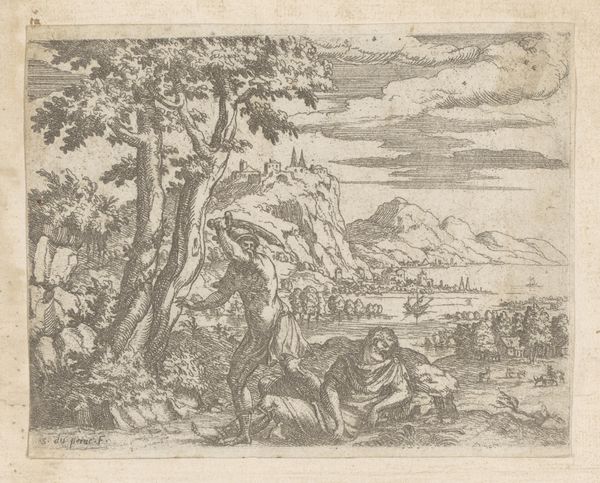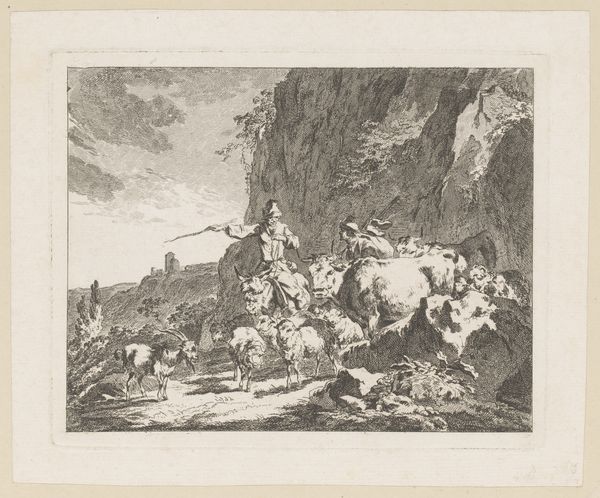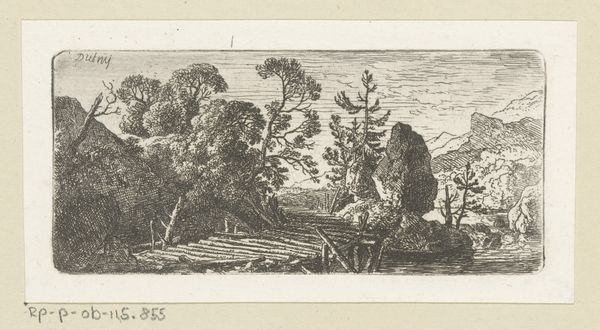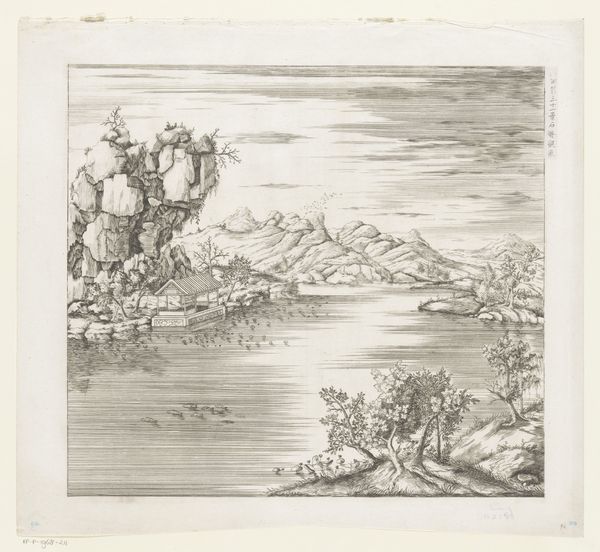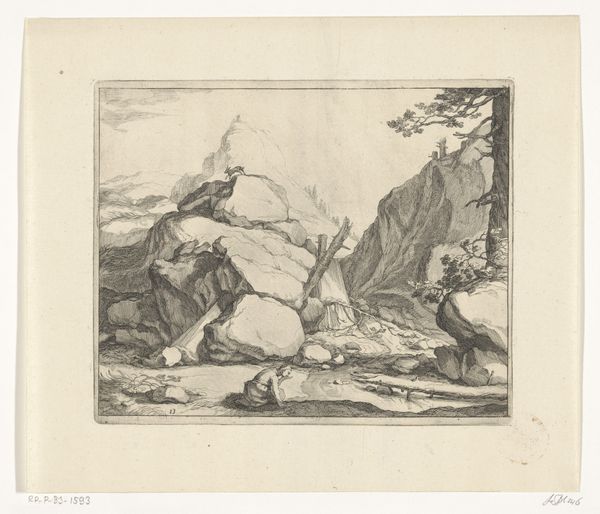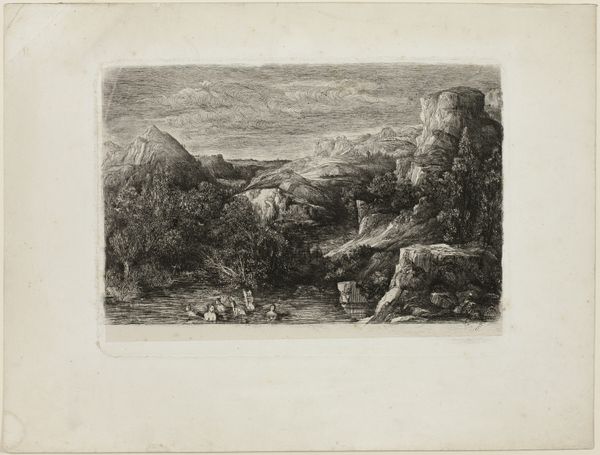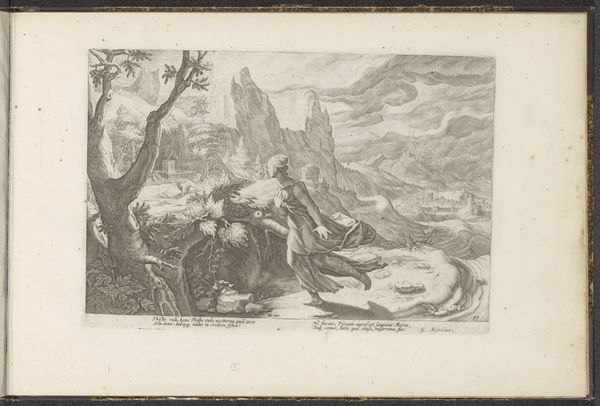
Landschap met rotsblok naast pad en berg in de verte 1722 - 1774
0:00
0:00
christianwilhelmernstdietrich
Rijksmuseum
drawing, print, engraving, frottage
#
drawing
#
baroque
# print
#
old engraving style
#
landscape
#
line
#
engraving
#
frottage
Dimensions: height 49 mm, width 120 mm
Copyright: Rijks Museum: Open Domain
This landscape was etched by Christian Wilhelm Ernst Dietrich, sometime in the 18th century. As an etching, it was made with a metal plate, likely copper, and strong acid. The artist would have covered the plate with a waxy ground, then scratched an image into it with a fine needle. The plate then sits in an acid bath, where the exposed lines are eaten away. This painstaking process makes the image reproducible, aligning it with the burgeoning print culture of the time. Notice how the material influences the artwork's appearance. The etched lines define the forms, creating a sense of depth and texture. See how the mountains in the distance fade into the horizon, while the figures in the foreground are rendered with greater detail. The act of etching, with its reliance on craft skills, connects this landscape to a broader history of printmaking. Dietrich wasn’t just an artist, he was a skilled artisan, mastering a technique that bridged the gap between art and industry. Recognizing the labor, materials and techniques involved, we can challenge conventional ideas about art history and creative practice.
Comments
No comments
Be the first to comment and join the conversation on the ultimate creative platform.
